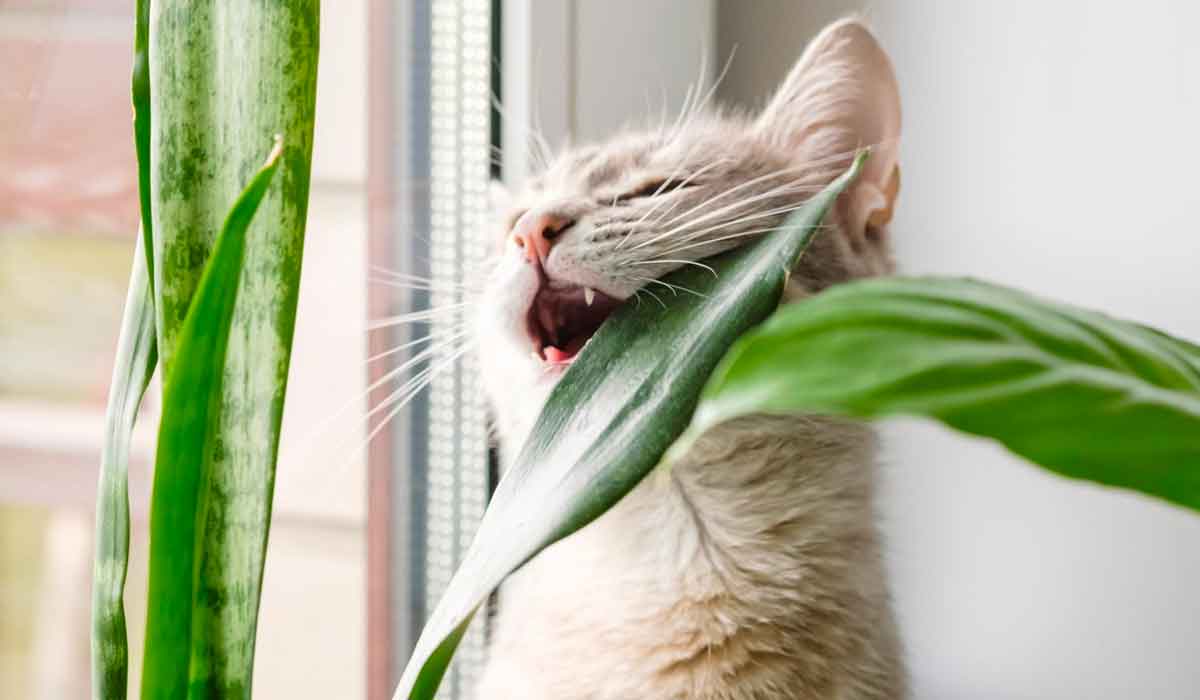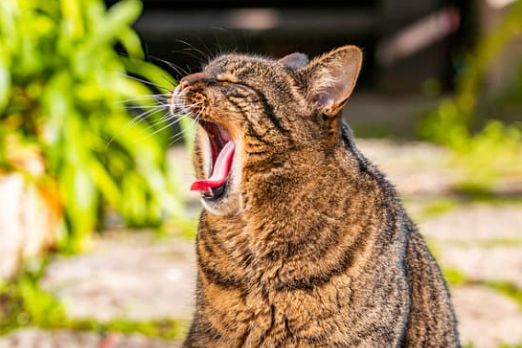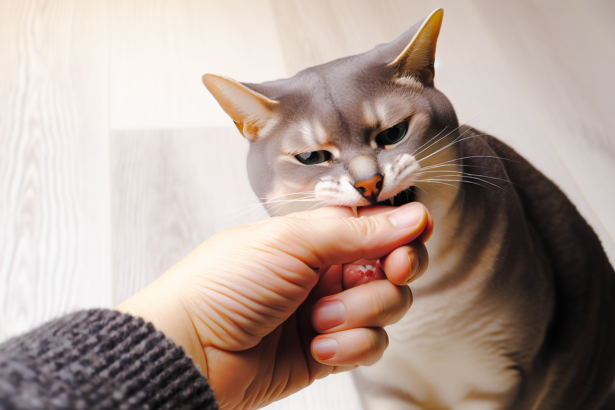When it comes to plants, cats are in constant danger – especially when they’re out and about. Curiosity and especially boredom can be fatal to your purring companion. But which plants are dangerous for cats?
Even if your cat is very careful about what it eats, a curious kitten or a bored cat may get fed up and start nibbling leaves or flowers just to get your attention.
Others go further, and can destroy your favorite flowerpot in a matter of hours. Or your four-legged friend may inadvertently ingest a toxic substance, such as lily pollen, while grooming, simply because it stuck to his coat while he was out walking. Whatever the reason, the consequences can be fatal.
In fact, all plants and herbs, such as oats, can irritate the stomach. However, if they get the chance, cats love to nibble grass.
Cats can’t digest herbs and plants, but they use them.

Your cat is a carnivore (forget about trying to convert him to vegetarianism). As a result, its digestive tract lacks the enzymes needed to metabolize plants. That’s why cats eat grass, because it helps them eliminate hairballs and other hard-to-digest things. It’s often said that they “purge” themselves.
The consequence is well known to those of us who live with cats: grass irritates their stomachs and the result is vomiting on your favorite carpet. Fortunately, most of the houseplants most destroyed by cats are harmless.
But many others can make your cat sick, and even put its life in danger. Many common indoor and outdoor plants are harmful or toxic to your cat.
In fact, poisonous plant poisoning is far more common in clinical practice than food poisoning. Sometimes, the poison is limited to specific parts of the plant: fruit, flowers, pollen, stem or roots. But on other occasions, the danger spreads throughout the plant.
Dangerous plants for cats: lilies and other flowers
Prepared bouquets, fresh or dried, can be irresistible to your feline. But they frequently include poisonous flowers and plants, such as mountain laurel (Kalmia latifolia), azalea or rhododendron, hydrangea, charcoal (Euonymus) or holly. Or worse: lilies. A flower as beautiful for us as it is dangerous for your cat.
Because all parts of the lily plant are toxic and can be lethal. Don’t let your guard down. Even if you think your cat isn’t interested in lilies, it’s not safe. Even licking pollen off hair or drinking water from a vase containing lilies can cause severe kidney damage and death.
Yet little is known about this risk: one study concluded that 75% of people whose cat had been poisoned by a lily were unaware that the flower was toxic. And beware: the danger includes both species of the Lilium genus, the true lilies, and those of the Hemerocallis genus, or daylilies. In short, no lilies in the house, garden or terrace if you live with cats, as they are deadly to them.
Unfortunately, these are not the only flowers toxic to cats. Other common flowers widely used in bouquets, such as poppies, foxgloves and marigolds, also known as African carnations, can be dangerous. Poisoning manifests itself in the form of digestive problems for your feline: excessive salivation, lack of appetite, vomiting and diarrhea.
This type of poisoning also wreaks havoc on their nervous systems, causing lethargy, tremors, loss of balance, convulsions, blindness and even paralysis; or it can affect their breathing. Other plants release toxins that deactivate their hemoglobin, causing your faithful companion to die quickly.
23 plants to keep away from your cat
Other plants are just as dangerous for your cat. We have put lilies and other related species back on this list, given the seriousness of the poisoning.
- Amaryllis (Amaryllis)
- Autumn daffodil (Colchicum autumnale)
- Azaleas and rhododendrons
- Castor or infernal fig (Ricinus communis)
- Chrysanthemums (Chrysanthemum)
- Cyclamen
- Daffodils (Narcissus)
- Diffenbachia
- Ivy (Hedera helix)
- Hyacinth (Hyacintus orientalis)
- Kalanchoe (Kalanchoe)
- Lily (Lilium)
- Convalaria or lily of the valley (Convallaria majalis)
- Cannabis (Cannabis sativa)
- Rose laurel (Nerium oleander)
- Peace lily (Spatiphyllum)
- Pothos (Epipremnum aureum)
- Cica or sago palm (Cycas revoluta)
- Spanish thyme (Coleus ampoinicus)
- Tulip
- Yew (Taxus)
- Poinsettia (Euphorbia pulcherrima)
- Jerusalem cherry (Solanum pseudocapsicum)
What should you do if your cat has ingested a toxic flower or plant?
If you suspect that your cat has swallowed a poisonous plant, or part of one, contact your veterinarian immediately. Don’t wait for symptoms of poisoning to appear, as it may be too late by then.
If you know the name of the plant your cat has ingested, or bring in a sample, the vet will be able to diagnose and treat it more easily. He will also carry out a physical examination of the cat and tests to determine its general state of health, especially if the plant is unknown.
Depending on the plant, some treatments may be drugs to stimulate vomiting, activated charcoal to absorb toxins in the intestine, or drugs to protect damaged areas of the stomach. If necessary, the cat will receive supportive treatment, such as analgesics or anti-inflammatories.
In addition to taking precautions, place substitute plants that are not harmful to your cat. For example, a jar of catnip, some harmless cereals like oatmeal, or aromatic herbs like mint, peppermint or lavender. Your little carnivore can nibble at will. And then throw up happily on the carpet. Don’t get angry: he’ll leave as soon as he looks at you with those irresistible eyes.
Do you know of any other plants that can be a danger to our fur balls? Feel free to comment on other plants that are toxic to cats.
Do you have other questions about your hairballs? Please let us know in the comments, and we’ll be happy to reply!
Find out why your cat sleeps a lot








